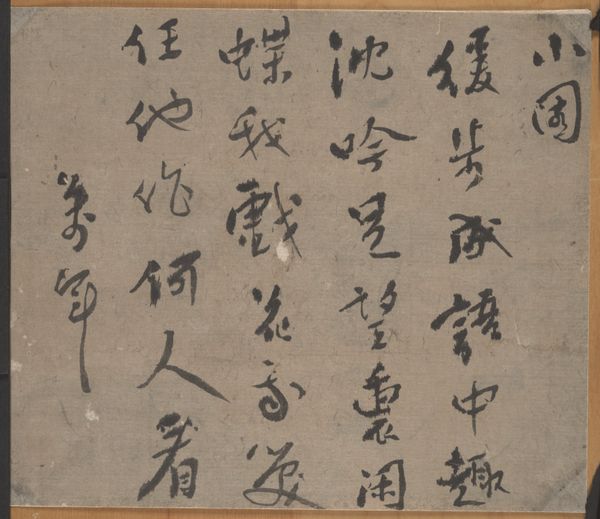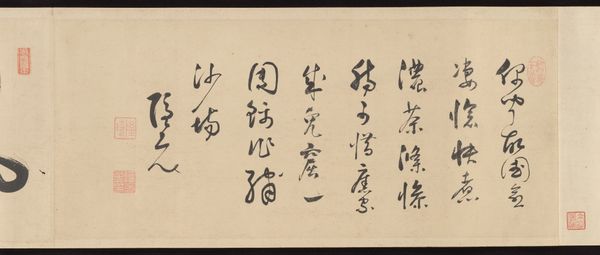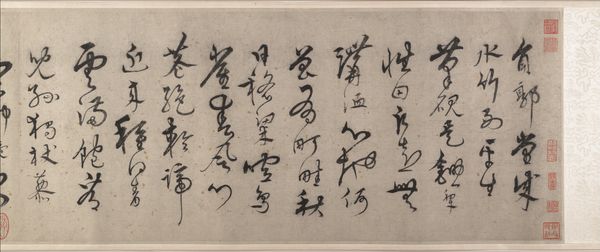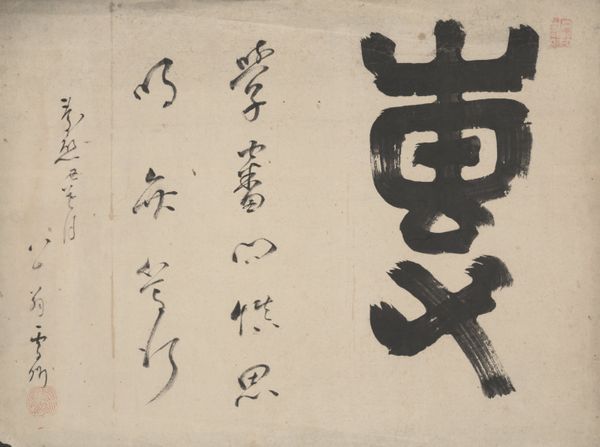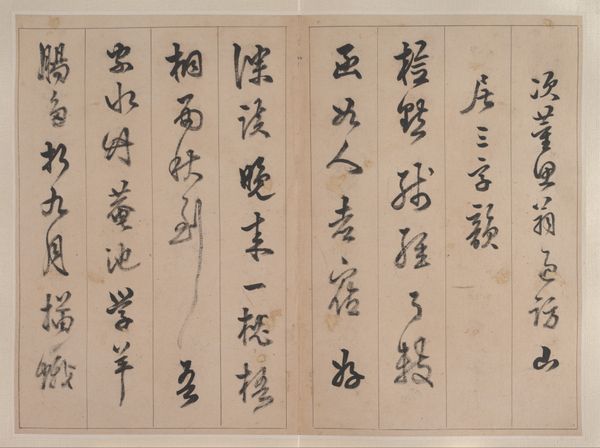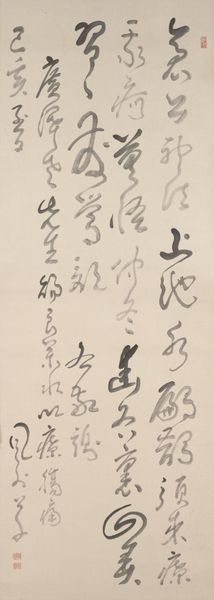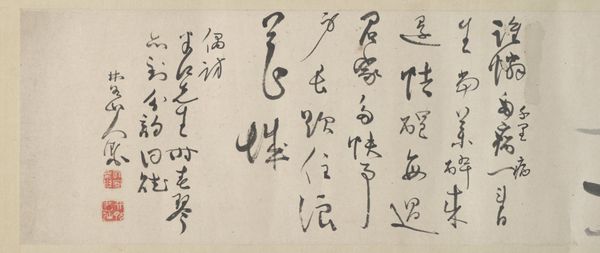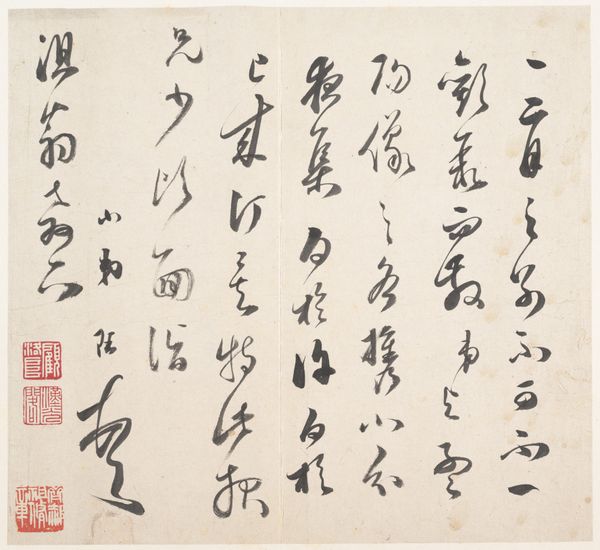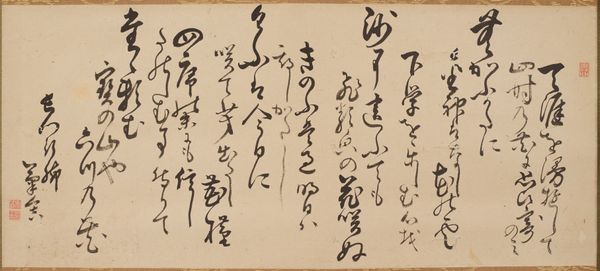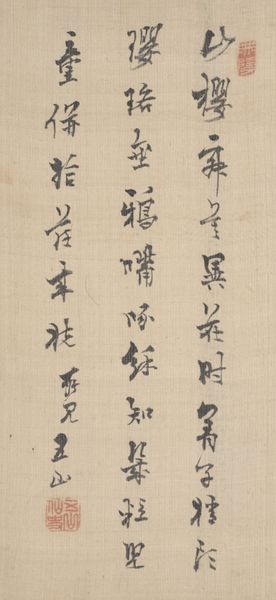
An Account of the Final Day of Chinese New Year’s Celebrations, from the Wise Counsel for Social Intercourse 1657
0:00
0:00
drawing, ink
#
drawing
#
asian-art
#
ink
#
calligraphy
Dimensions: Image: 10 7/8 in. × 13 ft. 5/16 in. (27.6 × 397 cm) Overall with mounting: 10 7/8 in. × 13 ft. 11 11/16 in. (27.6 × 426 cm) Overall with knobs: 11 1/2 in. × 13 ft. 11 11/16 in. (29.2 × 426 cm)
Copyright: Public Domain
Curator: What strikes you first about this work, "An Account of the Final Day of Chinese New Year’s Celebrations, from the Wise Counsel for Social Intercourse," crafted in 1657 by Kojima Sōshin? It's currently held at the Metropolitan Museum of Art. Editor: The ink, so fluid! It feels like a captured moment—fleeting, ephemeral, yet grounded by the texture of what appears to be aged paper. There is a certain organic asymmetry throughout the entire picture plane, from top to bottom. Curator: Indeed, the materiality speaks volumes. The piece is ink on paper, a medium that lends itself to both spontaneity and precision. Observe how Sōshin varies the ink density to generate contrast. This gives each character and compositional arrangement a unique sense of depth and presence on the canvas. Editor: For me, the imagery invokes the rituals and social structures linked to the Lunar New Year celebrations. Do you see specific symbols tied to fortune or communal prosperity encoded here? The very act of writing, of documenting the year’s close, becomes a symbolic preservation. Curator: Precisely! Calligraphy in this context functions not just as text, but as a symbolic record—a "textual performance," if you will—meant to embody ethical guidance and a celebration of shared traditions. We might examine the implied connections between the textual content and the artistic presentation here. Editor: Perhaps Sōshin's use of negative space also symbolizes renewal and possibility. After all, emptiness allows room for reflection, setting the stage for a new cycle of creation and, inevitably, transformation. Curator: Certainly. Its formal arrangement facilitates an ongoing cycle of engagement. It encourages close contemplation, which in turn helps one become aware of deeper structures, and so enables interpretation to unfold over time. Editor: This has given me a greater sense of its cultural memory and how skillfully its artist conveyed such emotional depth. Curator: A truly enriching observation; the blending of aesthetic components with such nuanced social observations makes Sōshin's work particularly captivating and worthy of extensive analysis.
Comments
No comments
Be the first to comment and join the conversation on the ultimate creative platform.
